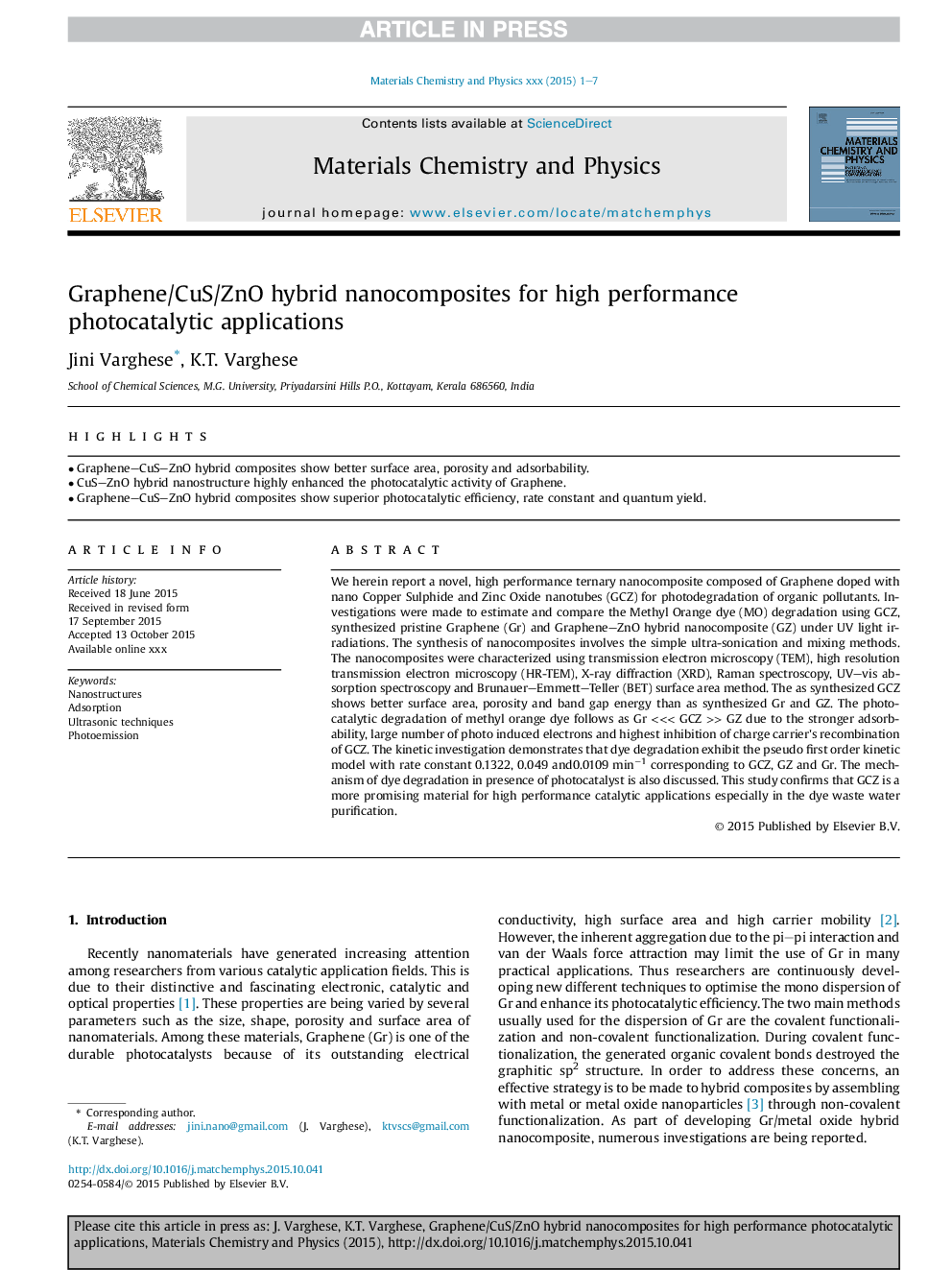| Article ID | Journal | Published Year | Pages | File Type |
|---|---|---|---|---|
| 1521002 | Materials Chemistry and Physics | 2015 | 7 Pages |
Abstract
We herein report a novel, high performance ternary nanocomposite composed of Graphene doped with nano Copper Sulphide and Zinc Oxide nanotubes (GCZ) for photodegradation of organic pollutants. Investigations were made to estimate and compare the Methyl Orange dye (MO) degradation using GCZ, synthesized pristine Graphene (Gr) and Graphene-ZnO hybrid nanocomposite (GZ) under UV light irradiations. The synthesis of nanocomposites involves the simple ultra-sonication and mixing methods. The nanocomposites were characterized using transmission electron microscopy (TEM), high resolution transmission electron microscopy (HR-TEM), X-ray diffraction (XRD), Raman spectroscopy, UV-vis absorption spectroscopy and Brunauer-Emmett-Teller (BET) surface area method. The as synthesized GCZ shows better surface area, porosity and band gap energy than as synthesized Gr and GZ. The photocatalytic degradation of methyl orange dye follows as Gr <<< GCZ >> GZ due to the stronger adsorbability, large number of photo induced electrons and highest inhibition of charge carrier's recombination of GCZ. The kinetic investigation demonstrates that dye degradation exhibit the pseudo first order kinetic model with rate constant 0.1322, 0.049 and0.0109 minâ1 corresponding to GCZ, GZ and Gr. The mechanism of dye degradation in presence of photocatalyst is also discussed. This study confirms that GCZ is a more promising material for high performance catalytic applications especially in the dye waste water purification.
Related Topics
Physical Sciences and Engineering
Materials Science
Electronic, Optical and Magnetic Materials
Authors
Jini Varghese, K.T. Varghese,
